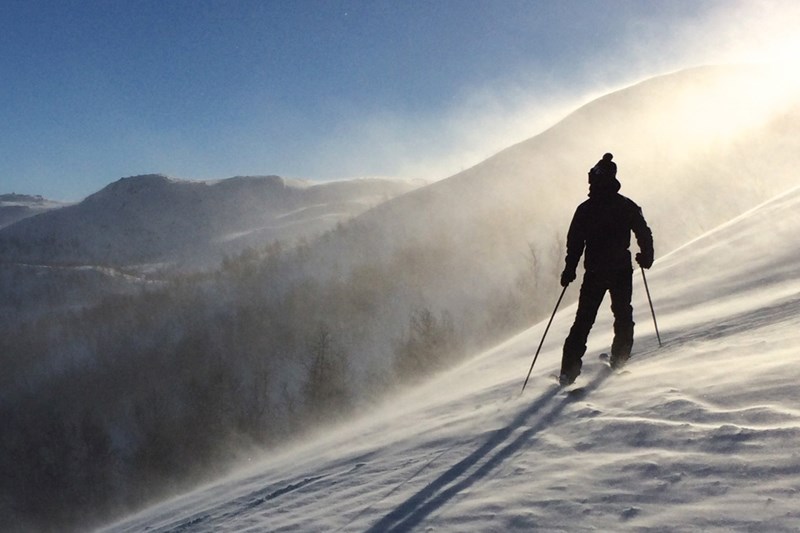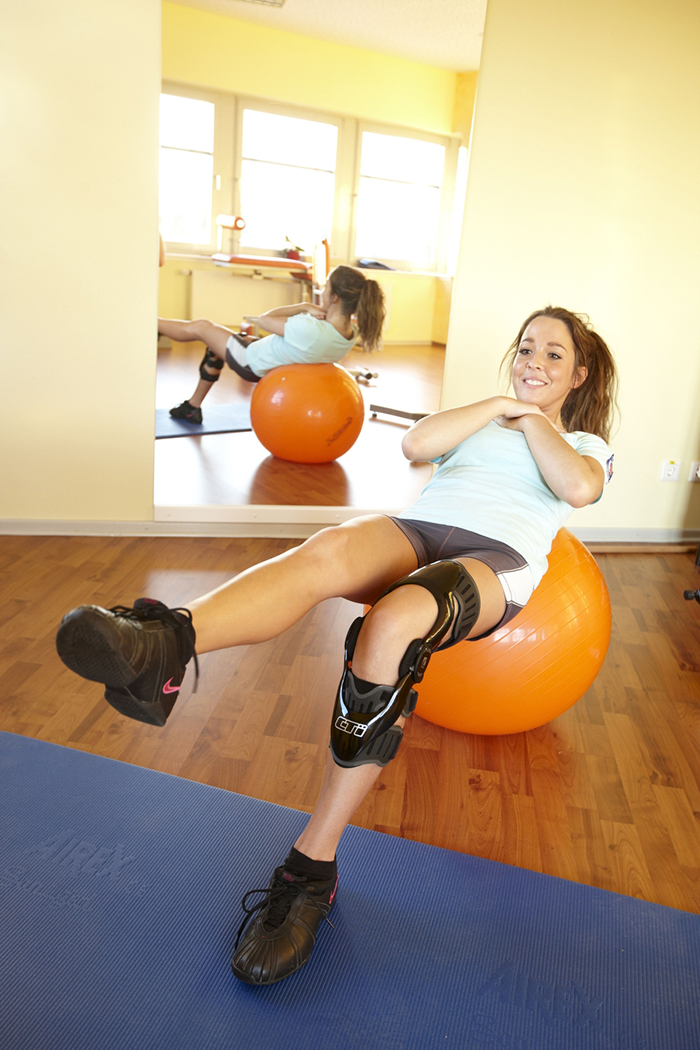The London Orthotic Consultancy has experience in treating a range of sports injuries including those frequently encountered over the winter period.
Exercising in cold environments places extra demand on your ligaments, joints and muscles. While being an excellent form of exercise, skiing and snowboarding are extreme sports that carry an associated high risk of injury by their nature. Most injuries can be prevented by warming up thoroughly, wearing appropriate protective gear, checking that your equipment works properly, staying alert and stopping when you are tired, or in pain. Injuries either occur from a traumatic incident or overuse of a specific body part.

Torn Anterior Cruciate Ligament (ACL) – a tear that makes the knee unstable and loses its full range of movement. In the long term, a functional knee brace can be used to provide maximum stability to an unstable knee, which would allow a patient to return to sport. Such braces are often used alongside a rehabilitation physiotherapy programme as an alternative to reconstructive surgery.
Torn Posterior Cruciate Ligament (PCL) – this can also be treated with knee bracing. In addition, a brace can provide protection against further damage for those wanting to get back into winter sports after an injury.
The Medial Collateral Ligament(MCL) and the Lateral Collateral Ligament(LCL) can also be damaged and knee bracing is often used to prevent further damage
Brain injury – often resulting from a bad fall or trauma to the head. Brain injury can initially be detected using CT or MRI imaging. Following initial emergency treatment, a patient will enter ongoing rehabilitative care to help them restore their physical and psychological functions.
Spinal cord injury – the rate of spinal injuries in snowboarders is substantially higher than that of skiers. Though rarely fatal, damage to any part of the spinal cord or nerves at the end of the spinal canal can result in temporary or more permanent changes in bodily sensation and strength. After a trauma, a patient will be stabilised with emergency treatment before starting a specific programme of long-term rehabilitation. This will include orthotic assessment and provision of appropriate orthoses.
Fractured Talus bone – also known as ‘snowboarder’s ankle’ this injury tends to occur above the heel bone, on the outside of the ankle. It often requires surgery.
Achilles tendon rupture – though difficult to do in ski/snow boots, it is still possible to suffer Achilles tendonitis from overuse or to rupture your tendon while skiing or snowboarding. This occurs when you tear the tissue that connects your calf muscle to your heel bone. If the Achilles tendon is under stress, due to poor foot mechanics, then a foot orthotic can be fitted to correct it, reducing everyday stress on the tendon.
Lower back pain – sprains occur when a sudden, unnatural movement injures a ligament that has become stiff or weak, sometimes as a result of cold environments or poor technique. At the initial consultation, the body will be scanned to identify areas of spinal and pelvic misalignment and abnormal muscle tension.
Muscular strains– these tend to occur in muscles such as the piriformis, hamstrings, calf and are the result of overuse, which, in turn, can be a result of a biomechanical abnormality. Bespoke foot orthotics aid rehabilitation and help to normalise any abnormalities in posture and gait. They can also reduce a person’s predisposition to such injuries.
Ankle sprains – this is a common injury that is caused by twisting or rolling the ankle in the boot, usually during a collision or fall. The ankle twists inwards and the foot rolls over the ankle. An ankle bracing orthosis can immobilise the ankle joint while allowing it to heal. Once the soft tissue damage has settled, a foot orthotic can be used to reduce the tendency for the foot to roll over the ankle.
Find out how one of our patients managed to enjoy a week’s skiing with the CTi brace, after being told by a consultant to cancel the holiday.
Many skiing and snowboarding injuries can be treated by an orthotist. Whether it’s caused by overuse or a traumatic accident, LOC can help you recover from a winter sports injury using biomechanical assessments and our bespoke orthotics aid rehabilitation programme

An insole is a contoured orthotic device which alters the characteristics and biomechanics of the foot and ankle area. Biomechanics are concerned with mechanical laws and how they affect the living body, especially the musculoskeletal system.
They are removable devices, often made from plastic, that are designed to fit inside a shoe to provide additional support for your feet. As well as offering shock absorption, an insole can help distribute the weight of your body more effectively across the foot and can be made bespoke to cover a range of biomechanical conditions.
If you have symptoms in your feet, ankles, hips or your lower back that are intermittent or were not there to start with in early life, and have started to cause you pain over a period of time, bespoke orthotic insoles could be an excellent option.
If you have already tried rest, icing, compression and elevation and your feet have not recovered, we recommend a biomechanical assessment to consider the possibility of insoles. They are a non-invasive approach to treatment and in many cases, are a great option for symptoms that are not severe enough to warrant surgical intervention. Alternatively, they can be considered as an option prior to surgery.
We will send patients away when an insole is not appropriate, if a patient is suffering with iliotibial band syndrome for example, the problem can be helped with physiotherapy and a stretching programme. That’s what our biomechanical assessment is all about; determining whether there would be any benefit from altering the alignment of your feet.

See how a thorough gait analysis and a correctly-fitted, bespoke Reciprocating Gait Orthosis (RGO) helped Ted, a spinal surgery and cancer survivor, improve his rehabilitation and mobility goals, getting him back on his feet again.

We are proud to announce the launch of our latest innovation in non-surgical treatment for pectus deformities. Our new dynamic chest compressor is one of the slimmest pectus braces on the market and is designed to reshape the chest without the need for invasive surgery.

Rosie’s very severe plagiocephaly was no problem for the LOCBand Lite 3D-printed cranial remoulding helmet, going from 16mm to 2mm in just six months.

When John came to see us, his ankle was in a bad way. He had around 60mm of his tibia missing and not much if any talus present. He needed crutches to support him to walk. A gait analysis and a new bespoke carbon fibre knee ankle foot orthosis (KAFO) later and he is able to walk again without crutches.

Matilde travelled from Chile to LOC for bracing treatment for her adolescent idiopathic scoliosis. Now, nearly a year and a half since she started wearing her brace, she has achieved near-total correction of the curvature of her spine. This is her scoliosis bracing story.

After only 6 months of wearing bespoke pectus braces from The London Orthotic Consultancy, Will started to notice a visible difference in his pectus carinatum.

After trying out several scoliosis braces in Romania, Ukraine and Turkey, Iulia begins treatment with the LOC Scoliosis Brace and is already seeing results in a matter of months. Here her mum, Raluca, describes how and why they came to LOC for her treatment.

Through bracing treatment with the dynamic chest compressor, Jack has achieved 90% correction in his pectus carinatum after only two months. Here, mum describes Jack's non-surgical treatment journey.